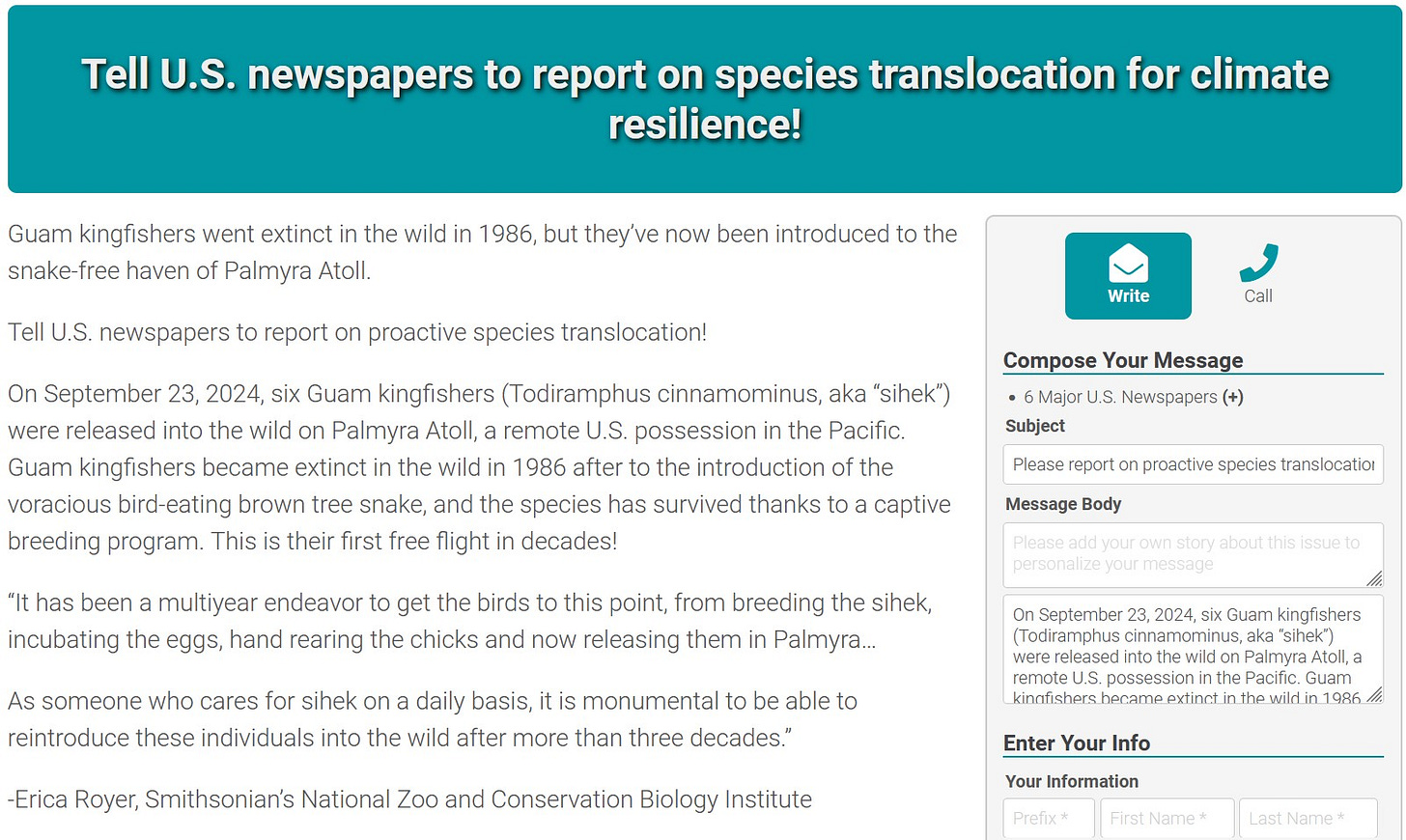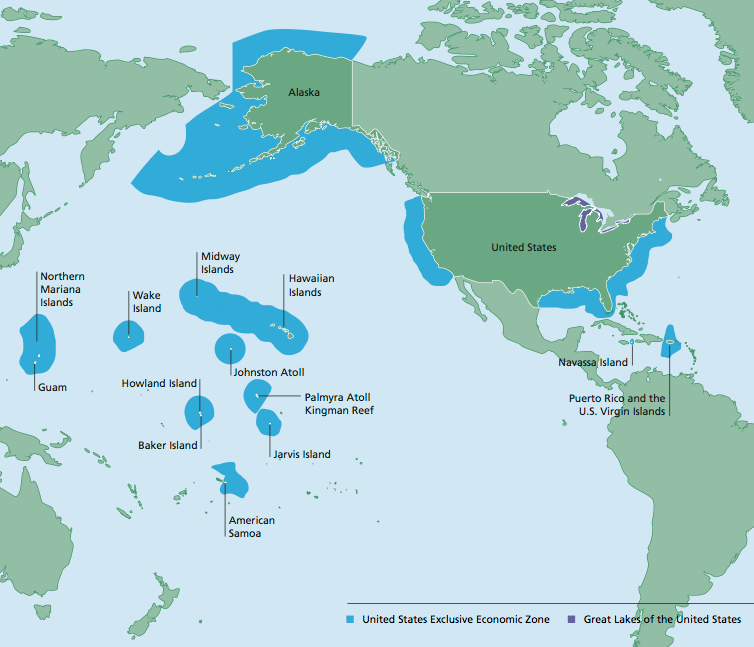Your Daily Dose of Climate Hope: October 16, 2024
The first free flight of Guam kingfishers in decades is a first step for a new climate resilience method!
Guam kingfishers went extinct in the wild in 1986, but they’ve now been introduced to the snake-free haven of Palmyra Atoll.
Tell U.S. newspapers to report on proactive species translocation!
Touch or scan the QR code below to take today’s action in the app and earn trees!
Or take action on the Internet – no app required!
Reasons For Hope
On September 23, 2024, six Guam kingfishers (Todiramphus cinnamominus, aka “sihek”) were released into the wild on Palmyra Atoll, a remote U.S. possession in the Pacific. Guam kingfishers became extinct in the wild in 1986 after to the introduction of the voracious bird-eating brown tree snake, and the species has survived thanks to a captive breeding program. This is their first free flight in decades!
“It has been a multiyear endeavor to get the birds to this point, from breeding the sihek, incubating the eggs, hand rearing the chicks and now releasing them in Palmyra…
As someone who cares for sihek on a daily basis, it is monumental to be able to reintroduce these individuals into the wild after more than three decades.”
-Erica Royer, Smithsonian’s National Zoo and Conservation Biology Institute
What’s particularly interesting about this project is that it marks one of the first times in modern history where the U.S. government is supporting a project to introduce a species in the wild outside of its “native” range. Guam kingfishers are native to (you guessed it) Guam, but they can’t be safely reintroduced there as the brown tree snake is too well established. Palmyra Atoll is thousands of miles away from Guam, and Guam kingfishers have never lived on Palmyra Atoll before September 2024.
This isn’t a reintroduction, but a first-time-ever conservation introduction, made legally possible by the Fish and Wildlife Service’s 2023 release of new regulations based on Section 10 (j) of the Endangered Species Act (ESA), which will for the first allow “experimental populations” of endangered species to be established outside their historic range. This sounds like the epitome of bureaucratic tedium, but it actually represents a paradigm shift in wildlife conservation thinking that will help make possible a multitude of new projects to help America’s animals and plants survive the Anthropocene.
Section 10 (j) is the ESA provision that allows the reintroduction of endangered species into areas where they used to live but have disappeared, like the classic case of wolves returning to Yellowstone1. Allowing projects like this to take place in areas where the endangered species at issue hasn’t previously lived is a critical legal tool to allow conservationists to proactively adapt to the changing landscapes of the Anthropocene. Climate change is forcing many creatures to move north, inland, or otherwise into new realms to have a chance at survival, and the U.S. government is now able and willing to help them do that. For example, a translocation project is already being considered for the Key deer, a diminutive white-tailed deer relative native to the Florida Keys whose historic range is at risk of becoming uninhabitable (for the deer) due to saltwater intrusion from sea level rise.
This new regulatory tweak opens up fascinating possibilities for truly proactive conservation efforts across Anthropocene America, and will hopefully resonate for decades to come. We’re quietly seeing the dawn of a bold new proactive and open-minded “immigrant species” future for conservation efforts in America! More people deserve to know about this fascinating work.
Tell U.S. newspapers to report on species translocation for climate resilience!
There's still time to get out the vote before November! Join Climate Action Now and League of Conservation Voters for a special letter-writing event on Thursday, Oct. 17 at 7:30 pm ET. We will learn about the Vote Forward platform and work on crafting messages to add a personal touch to prewritten letters.









Thank you for this uplifting news !!! How exciting to be a part of this unfolding research!!!!